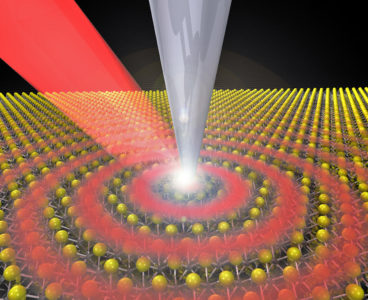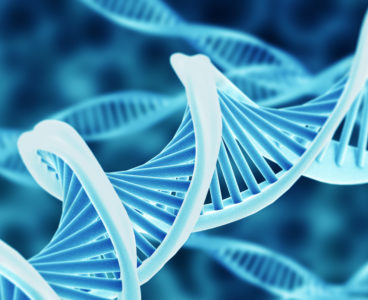
Nanodefects Eyed as Cause of Electrical Material Breakdowns
Tiny defects in electrical insulating materials may lead to breakdowns, robbing the power grid and even cell phones of reliability and efficiency. Xiaoli Tan, an Iowa State University professor of materials science and engineering, is working to understand how those nanoscale defects, when subject to extreme electric fields, evolve into material failures. Those failures turn…
Common, Cheap, Non-Toxic Elements Used to Synthesize Semiconductors
One of the problems for Javier Vela and the chemists in his Iowa State University research group was that a toxic material worked so well in solar cells. And so any substitute for the lead-containing perovskites used in some solar cells would have to really perform. But what could they find to replace the perovskite…
Experiment Sheds New Light on Prehistoric Ocean Conditions
Engineers Develop Smart Material That Changes Stiffness When Twisted or Bent
A new smart and responsive material can stiffen up like a worked-out muscle, say the Iowa State University engineers who developed it. Stress a muscle and it gets stronger. Mechanically stress the rubbery material – say with a twist or a bend – and the material automatically stiffens by up to 300 percent, the engineers…
Washable Electronics Possible Thanks to Graphene
New graphene printing technology can produce electronic circuits that are low-cost, flexible, highly conductive and water repellent. The nanotechnology “would lend enormous value to self-cleaning wearable/washable electronics that are resistant to stains, or ice and biofilm formation,” according to a recent paper describing the discovery. “We’re taking low-cost, inkjet-printed graphene and tuning it with a…
Graphene “Tattoos” Developed for Plants
Iowa State University plant scientist Patrick Schnable quickly describes how he measured the time it takes for two kinds of corn plants to move water from their roots, to their lower leaves and then to their upper leaves. This was no technical, precise, poster talk. This was a researcher interested in working with new, low-cost,…
Improved Nanovaccine Seeks to Destroy Flu Virus
Researchers Image Quasiparticles that Could Lead to Faster Circuits, Higher Bandwidths
Zhe Fei pointed to the bright and dark vertical lines running across his computer screen. This nano-image, he explained, shows the waves associated with a half-light, half-matter quasiparticle moving inside a semiconductor. “These are waves just like water waves,” said Fei, an Iowa State University assistant professor of physics and astronomy and an associate of…
Family History of Alzheimer’s May Alter Metabolic Gene That Increases Risk for Disease
Graphene Alters Stem Cells to Regrow Nerves
Researchers looking for ways to regenerate nerves can have a hard time obtaining key tools of their trade. Schwann cells are an example. They form sheaths around axons, the tail-like parts of nerve cells that carry electrical impulses. They promote regeneration of those axons. And they secrete substances that promote the health of nerve cells.…
AAAS Annual Meeting: Engineer Addresses Need for Scientists, Engineers to Engage the Public
Generator Mimics Trees to Produce Electricity
Money doesn’t grow on trees, but electricity might someday. Iowa State University scientists have built a device that mimics the branches and leaves of a cottonwood tree and generates electricity when its artificial leaves sway in the wind. Michael McCloskey, an associate professor of genetics, development, and cell biology who led the design of the…
Researchers to Develop New Steel for Better Electric Motors
Printed Graphene and Lasers Aid Paper Electronics
The researchers in Jonathan Claussen’s lab at Iowa State University (who like to call themselves nanoengineers) have been looking for ways to use graphene and its amazing properties in their sensors and other technologies. Graphene is a wonder material: The carbon honeycomb is just an atom thick. It’s great at conducting electricity and heat; it’s…
Scientists Develop Quick-Destructing Battery to Power ‘Transient’ Devices
Self-destructing electronic devices could keep military secrets out of enemy hands. Or they could save patients the pain of removing a medical device. Or, they could allow environmental sensors to wash away in the rain. Making such devices possible is the goal of a relatively new field of study called “transient electronics.” These transient devices…
Nanomachines Can Diagnose Illness
Imagine you want to build an intricate work of architecture, like a castle. Now imagine that, once all its individual components are brought together, the castle builds itself automatically. Finally, imagine this castle is so small that it’s measured on the same scale as DNA, viruses, and small molecules. You’ve just entered the nanoscale world…









